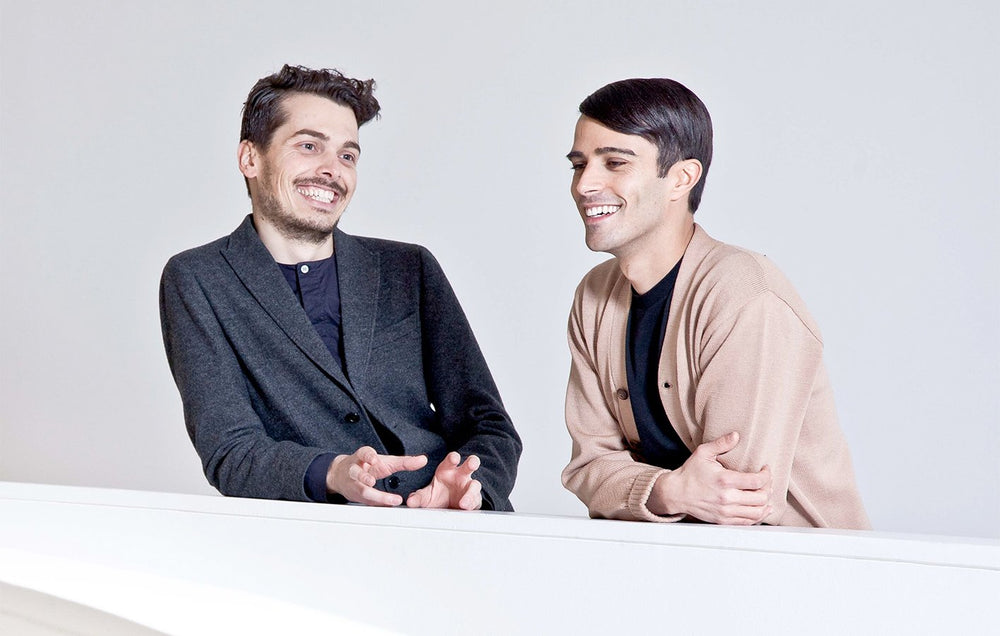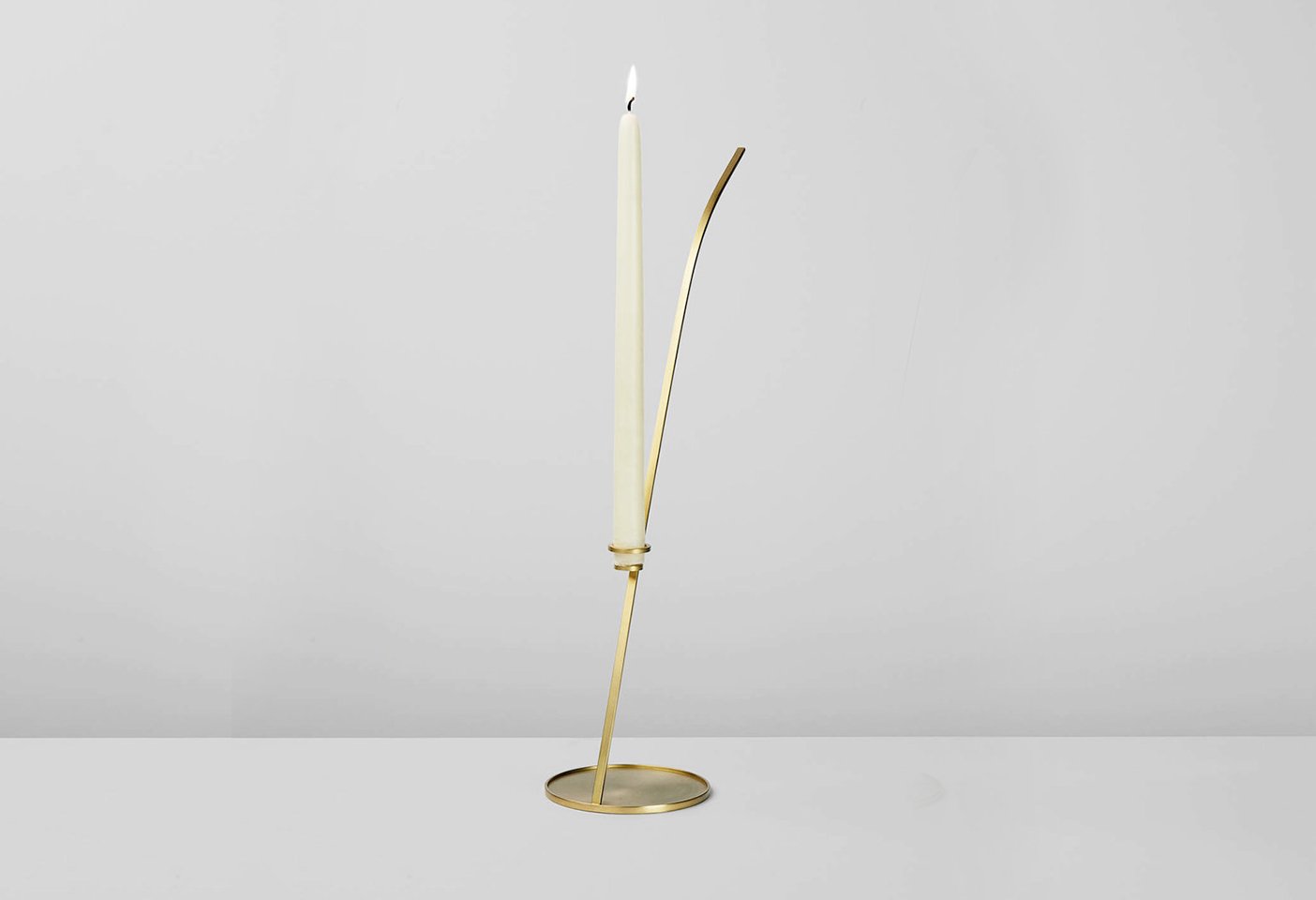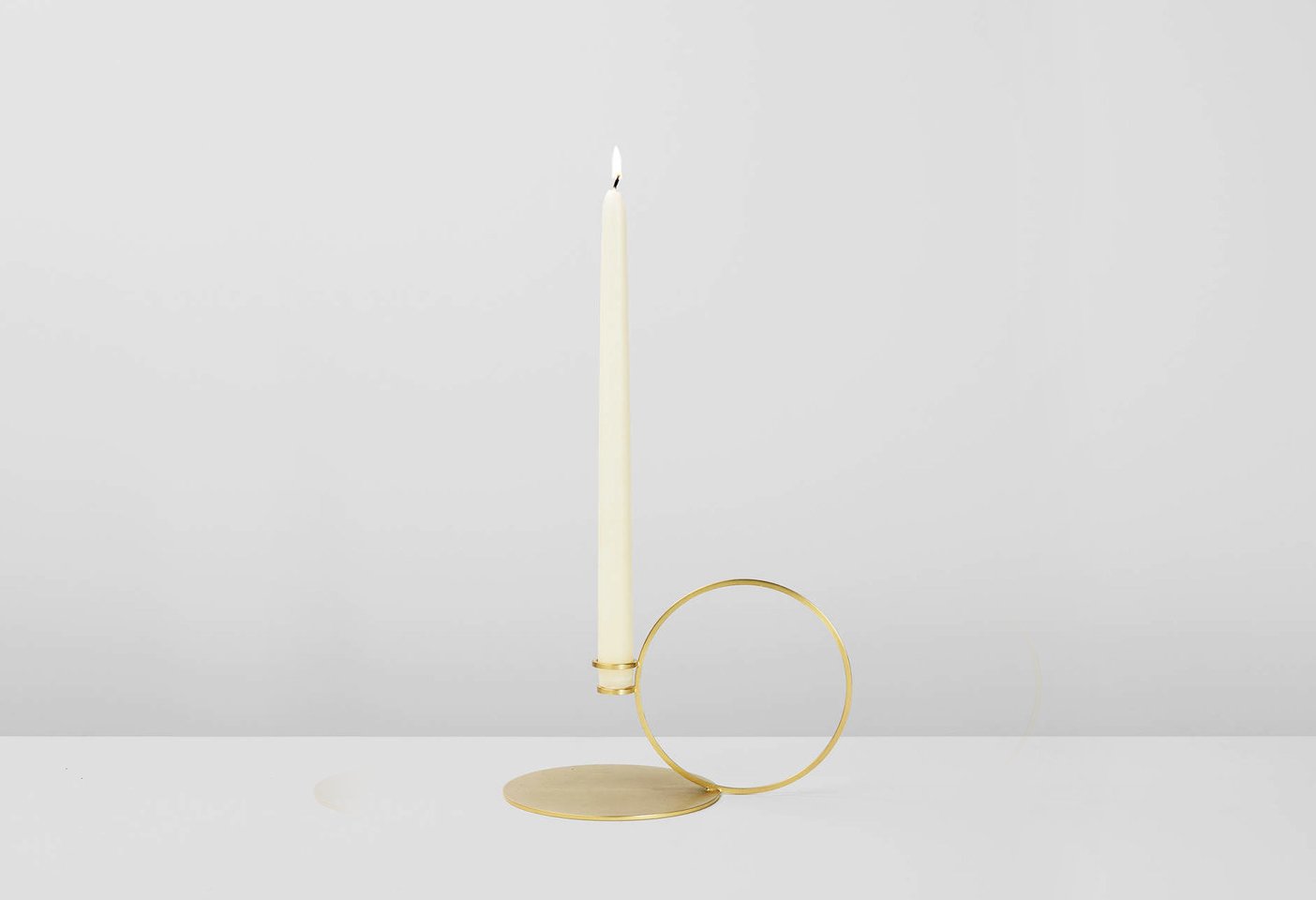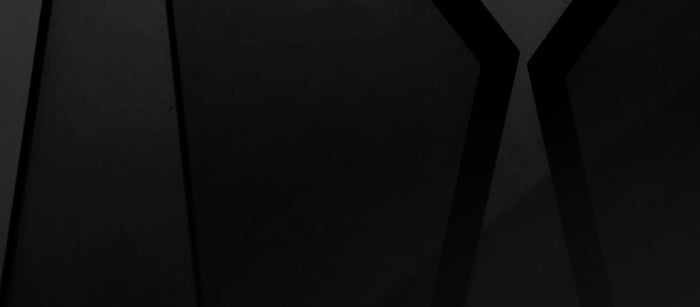
Formafantasma is the studio of Italian designers Andrea Trimarchi and Simone Farresin who met while studying at the Design Academy Eindhoven and now base their practice in The Netherlands. Their work is experimental and thought-provoking, investigating everything from traditional craftsmanship to the transformation of e-waste into new products.
The work of Formafantasma is characterised by its intersection of craft, industry and the user, often involving new ways of engaging their audience through furniture, objects, lighting and exhibitions.
Recently they began a collaboration with Brooklyn-based lighting studio Roll & Hill, developing two lamps, Gambalunga and Bulga. Taking the magic of light back to its source, the paired-down candleholders have a sense of familiarity. Bulga reimagines the iconic candlesticks used before the invention of electricity, and both pieces are grounded in cultural and historical nuance.
more space caught up with Andrea and Simone to discuss the methodology behind the way they work.

The Gambalunga lamp designed by Formafantasma for Roll & Hill is at once familiar and new, taking the traditions of the candlestick and revisiting them for the 21st century. Photo c/o Roll & Hill.

The Bulga lamp, meaning candlestick, is the second piece in the series designed by Formafantasma for Roll & Hill in Brooklyn, New York. Photo c/o Roll & Hill.
Formafantasma: We have a lot of discipline and we are very organised. We go for a walk every morning before we start work and we never work during the evening. Recently we travel a lot for work so we are forced to become much faster with decision making when we are in the studio. Our life and our work are basically the same thing. Despite this we always find time to have a long holiday during the year. It is our way to balance things. It is very important to make sure we have the time to reflect on things and where we want to go as designers.
What are the moments that have been most important in the development of your practice so far?
Meeting each other during our BA in Florence. We started working together and we applied at the Master at Design Academy in Eindhoven as a team. It was the first time this was happening. The head of the IM Master program, Gijs Bakker, was so open minded and he understood how it could work. So we graduated with a joint project. Probably we have not found a perfect way of working yet. Everything is really organic and sometimes there are a lot of discussions. But that is also the nice part. When we work together we can communicate between us using really abstract or undefined descriptions. We understand and trust each other. Working as a couple gives you the possibility to look at your work with more objectivity.
Who are the collaborators who have had the most impact on you?
When we graduated we worked for a few years with Libby Sellers. Back then she had a gallery and she really supported our work. She could understand our ideas and push them ahead. She gave us the chance to present works internationally in Miami Basel, for instance, that are totally challenging for the majority of design collectors, like {the projects} Moulding Tradition and Colony. Those works are reflecting on local culture and the refugee crisis and the impact of Italian colonialism in North Africa. Also the gallery we work with now, Giustini Stagetti in Rome, is supporting us in many ways and introduced us to incredible historical Italian design pieces. They are very knowledgeable!
“We are trying all the time to challenge what we can do within the design discipline and to find ways to be innovative. Probably the best design skill we developed is to be able to smell from afar if a project or client is interesting or not… ”
Andrea Trimarchi and Simone Farresin, Formafantasma.
What skills have you each developed that you are most proud of and what is one thing that you haven’t ever designed but would love to?
We are not sure which are the skills we are the most proud of. For sure we are proud of how we are shaping our practice. We are trying all the time to challenge what we can do within the design discipline and to find ways to be innovative. Probably the best design skill we developed is to be able to smell from afar if a project or client is interesting or not… we are trying as much as possible not to waste our time on silly things or silly collaborations.
Thank you both.
Roll & Hili is available exclusively in South East Asia from Space – Australia – and Space – Asia.

